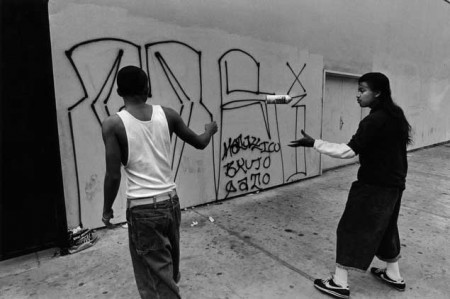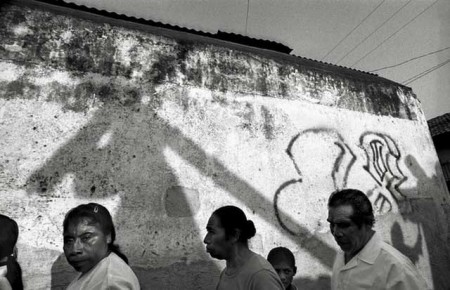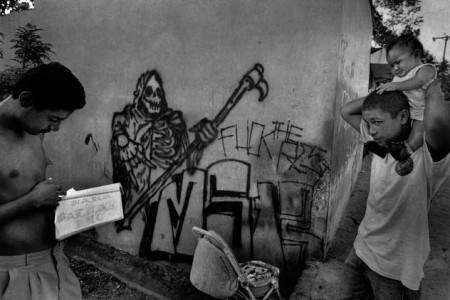If gang tattoos function as representations of the contested identities of socially excluded youth, gang graffiti functions as one of the indicators of contested boundaries of gang influence or control.
For the smallest gang units—the local cliques or sets (clica or clika in Spanish) — territory can simply mean the actual streets in the barrio or neighborhood where their close-knit group lives, hangs out or “works.” Graffiti indicating the gang and the clique moniker for example: Mara Salvatrucha, Francis Street Locos, give precise information about which gang set is established in a particular sector.
In addition to signaling territory that is controlled, graffiti also functions as a warning or challenge to rival gangs when a formerly unclaimed territory or enemy controlled area is about to be contested.
The logic of territory is critical not merely symbolically, but also economically. Gang territory is most often located in economically and socially excluded zones of the urban landscape. Such areas rely upon the underground economy for the unregulated goods and services upon which survival depends. The critical economic role that drug dealing and extortion play in the political economy of neighborhoods has traditionally been a local focus of study by some anthropologists and sociologists researching gangs and armed actors in the US and Latin America.
However, gang territories can no longer be understood simply as zones of insular informal and illegal economic activity. There are overlapping interests with a variety of other criminal or armed actors that may exert influence over members of the local gangs whose territory is linked through other networks. Trafficking corridors for example require contiguous territories through which drugs, arms or people may flow.
Hagedorn and other researchers including many in Latin America contend that the critical area for research is the ways that globalization is developing and transforming networks connecting local actors to regional and transnational ones as illegal markets become an integral part of the world economic system.
Zero tolerance law enforcement in Central America and new economic interests provoked new gang rules prohibiting members from tattooing themselves with visible gang tattoos. At the same time, the practice of marking zones of control with elaborate displays of graffiti is also being altered as gangs develop new relations to territory and new symbols with which to display it.
- More Information: “Youth Gangs in Central America,” report from the Washington Office on Latin America


